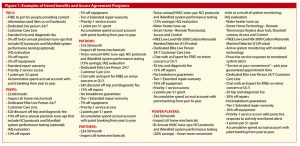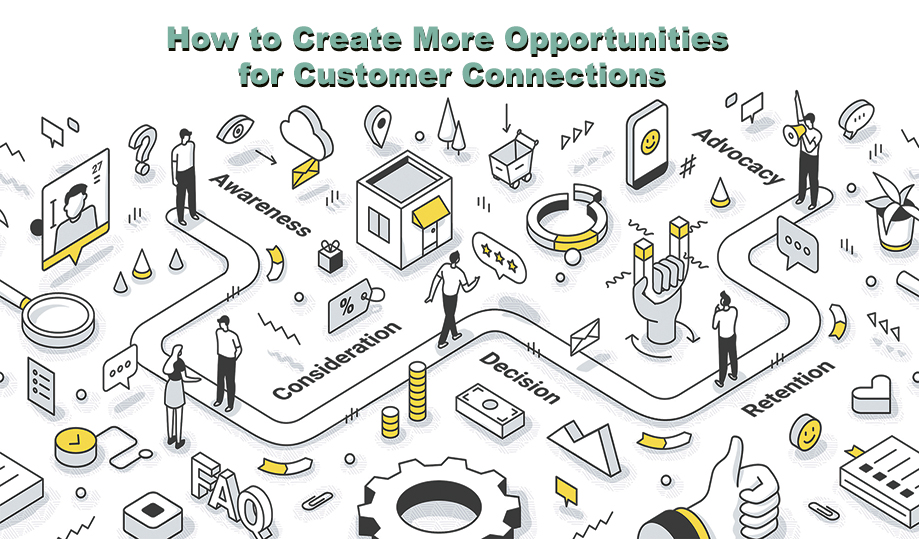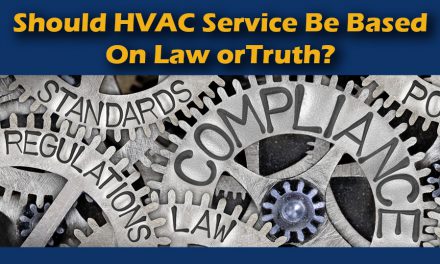Customers Want Access And Options
The most successful residential HVAC companies have a lot of service agreement customers. This committed captive audience yields recurring revenue, online visits, and opportunities for other purchases and cross-promotion for other services many home services contractors now offer.

The Key Performance Indicator (KPI) for a healthy home services company is to have 1000 agreements per million dollars of residential revenue. A vibrant and thriving company has at least 1500 agreements per million dollars of revenue. Another KPI is for the company to secure 50% or more of their customers on service agreements.
The problem I see with most companies is that their service agreement program only offers a singular agreement. That is where the opportunities are lost.
Even my Hilton Honors American Express credit card offers me choices for which card to carry. The Blue card carries no annual fee, has the fewest benefits, and lowest point earnings. The Surpass card costs $95/year, has more benefits, and earns more points.
The Aspire card costs $450/year, has the most benefits, and earns the most points, including reward weekends. For me, the Aspire card makes sense because what I earn pays me back more than the fee in benefits, points for future stays, and reward weekends.
A Choice of One is a Choice of None
Customers want options, not ultimatums (by definition, a final proposition, especially one whose rejection will end negotiations, can cause a resort to force or other action, often in the opposite desired direction).
Most service companies offer maintenance agreements that include periodic tune-ups, priority service, and discounts. Because this is usually the only option, many customers choose not to purchase it.
Some customers don’t want to pay anything for maintenance but desire a discount should a repair arise. Affluent customers tend to want the highest levels of access and service. Discounts don’t typically move the needle for them. Here lie the best opportunities for a sharp HVAC retailer.
Give Customers Something to Say ‘No’ to
Think about it this way: If you are an electronics retailer and you ask people who are in the market for a new big screen TV, ‘Would you like to buy a TV from us,’ many will say ‘no?. If you ask, ‘Of the various TVs we offer, which model is most appealing to you: the 4K, plasma, or OLED model?’

Now the customer has several things to consider. This makes you appealing to a larger segment of the market and more customers will select one of the choices offered. Some will still say ‘no’ to buying a TV from you now (they may come back later or never).
In the multi-offering scenario, the customer must state they want nothing offered (a 75% chance of earning the customer’s business – 3 choices vs. no offers). Compare that to the first scenario where the customer can say ‘yes’ or ‘no? (a 50% chance based on math, but less than a 25% chance based on buyer psychology and statistics when the only choices offered are a ‘yes’ or ‘no.’ To have options the customer must consider other service companies).
Active Customers Drive Revenue
We all know the more active customers (someone who has paid for a product or service in the last 36 months) a company has, the greater the revenue and profit generation potential. Service agreement customers meet this criterion since they pay for their agreement monthly or annually.
However, if you only offer one type of agreement, the odds of locking in the maximum amount of people are less than if you offered various options to become agreement customers.
Ice Cream Isn’t The Only Thing That Sells Better With Choice
Offering multiple levels of service lets customers choose access, service, engagement, benefits, protection, etc. that makes sense to them. It also offers things to which they can say ‘no.’
Now more than ever, people will consider paying for greater levels of access, service, and value-added benefits. They will pay a premium for avoiding or solving pain and problems, life impacts, extraordinary and exclusive experiences, status, identity, and more.
Think of it this way, ice cream parlors always offer a variety of flavors even though vanilla may be favored by many. They do so because they will attract more people to their store who will buy more as a result. Service companies become more alluring and compelling to more consumers when they do the same thing.
A Tactical Approach to Consider
My recommendation is to vary the level of service access you offer. Offer service at the customers’ convenience. Be sure all customers get world-class service and customer-care experience.
Figure 1 shows examples of tiered benefits and access agreement programs (dollar amounts and percentages are for demonstration purposes only).

Click Below for next page:













Recent Comments